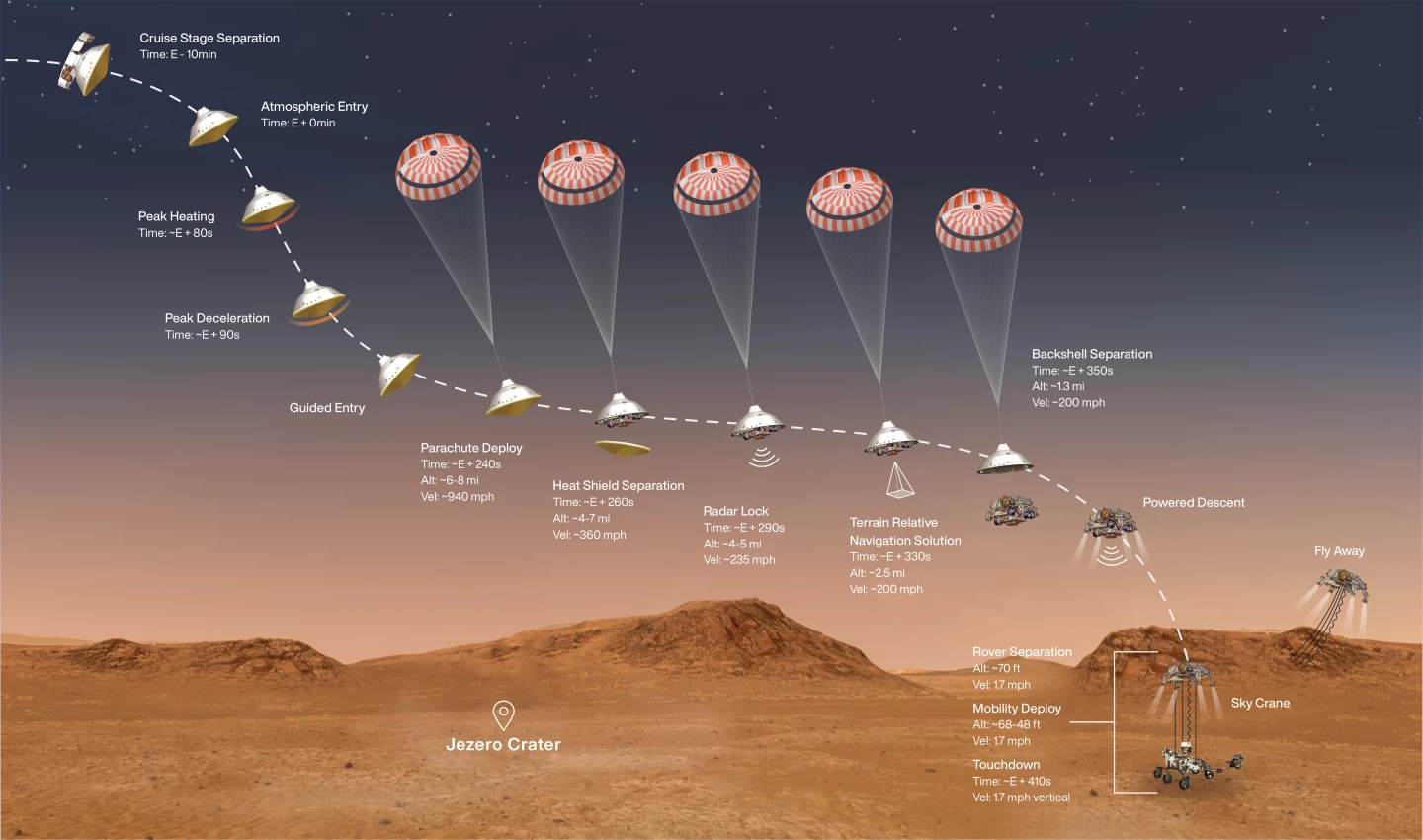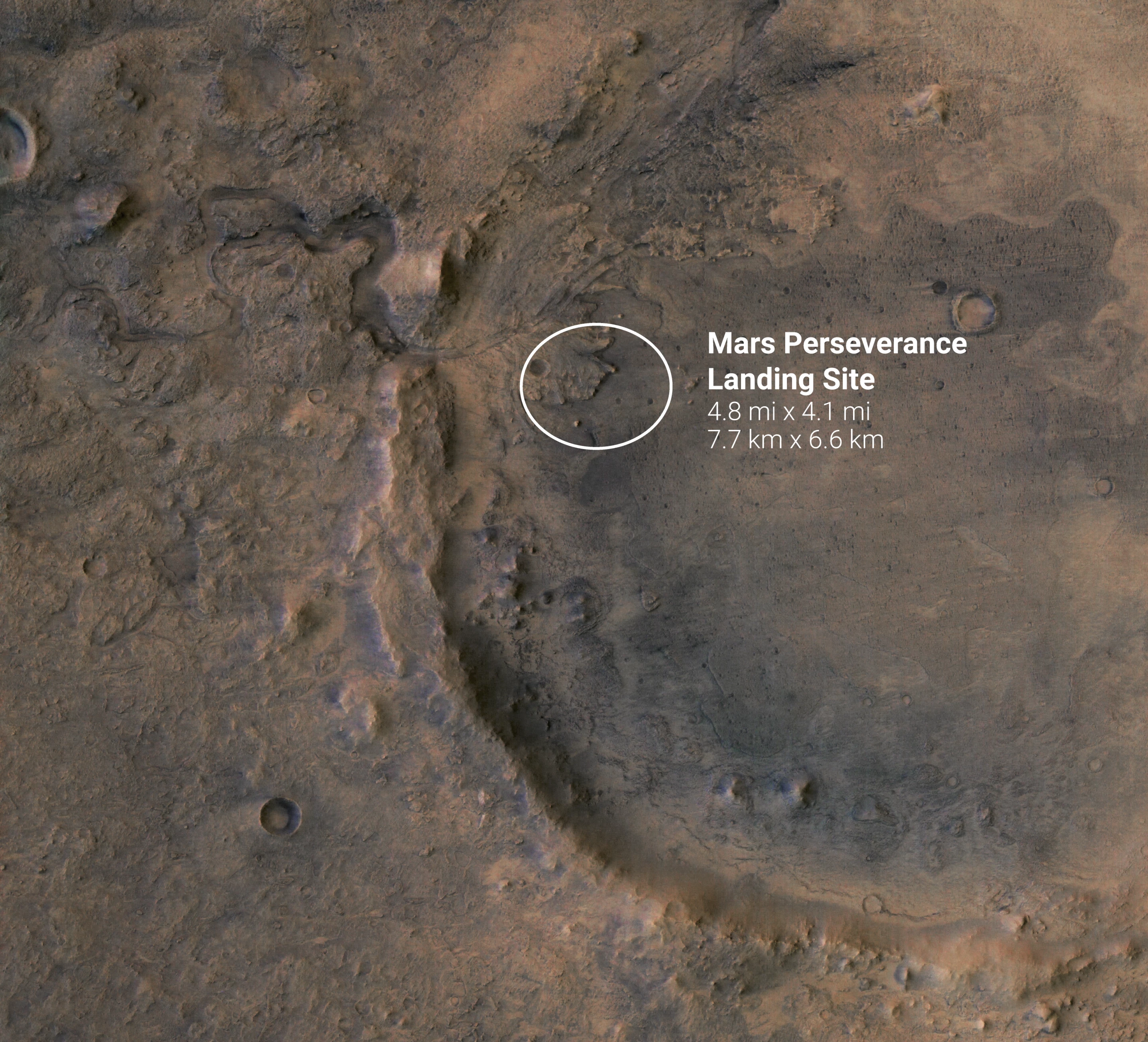NASA's Perseverance Mars rover has safely touched down on the Red Planet. After a dramatic seven-minute descent, the robotic explorer landed at 3:55 pm EST in the 28-mile (45 km) wide Jezero Crater located in the Martian northern hemisphere and returned its first images four minutes later.
Though NASA has enjoyed a string of successful Mars landings in recent years, such missions are extremely difficult with an extremely high failure rate. Landing Perseverance was particularly nerve wracking for NASA engineers because the spacecraft was using a new navigation system that, if it worked, would allow it to land in a much smaller area than the one the Curiosity rover touched down in.
Today's events began with Perseverance still cocooned in its protective aeroshell and connected to the Cruise Stage, which handled the 293 million mile (471 million km) voyage to Mars that began on July 30, 2020. Due to the distance between Mars and Earth, radio signals take several minutes to reach their destination, so all the maneuvers were carried out autonomously with Mission Control back in California reduced to the role of passive observers, reading telemetry from the spacecraft directly or relayed by other Mars-orbiting craft.

Ten minutes before hitting the Martian atmosphere, the Cruise Stage separated. The spacecraft entered the atmosphere at a speed of 12,100 mph (19,500 kph) at 3:48 pm EST, where it was guided by small thrusters to maintain attitude control. As the atmosphere became thicker, the aeroshell acted as a lifting body that could be steered toward the landing site.
At 3:49 pm EST, the heat shield reached a temperature of 2,370 °F (1,300 °C) as it decelerated at 10 gravities from hypersonic to supersonic speed. The supersonic parachute deployed at 3:52 pm EST and the heat shield was jettisoned 20 seconds later. At this point, the landing radar began to operate accompanied by a new visual navigation system, which monitored the terrain below and fed data to the onboard computer for the ideal landing trajectory.
Two minutes later, the backshell of the craft separated and Perseverance and the Sky Crane stage went into free fall until the landing thrusters on Sky Crane fired. Within a minute, the spacecraft was hovering over the Martian surface and Sky Crane winched Perseverance down. Once the rover was released, Sky Crane flew off to crash a safe distance away when its fuel was exhausted.

The landing marks the beginning of the most ambitious interplanetary mission that has ever been attempted. The US$2.4 billion mission is the first to be tasked with seeking out life since the Viking lander missions in 1976, and will work with a series of planned spacecraft to return the first Martian samples to Earth for analysis.
The key component of the Mars 2020 mission, the nuclear-powered Perseverance looks very much like the earlier Curiosity rover, but is much more advanced with 130 pounds (59 kg) of new scientific instruments and a robotic helicopter, which is the first aircraft ever to be sent to another planet.
You can watch NASA's Perseverance landing coverage below – the landing procedure starts at around 1:25, and the landing is confirmed at 1:40.
Source: NASA







